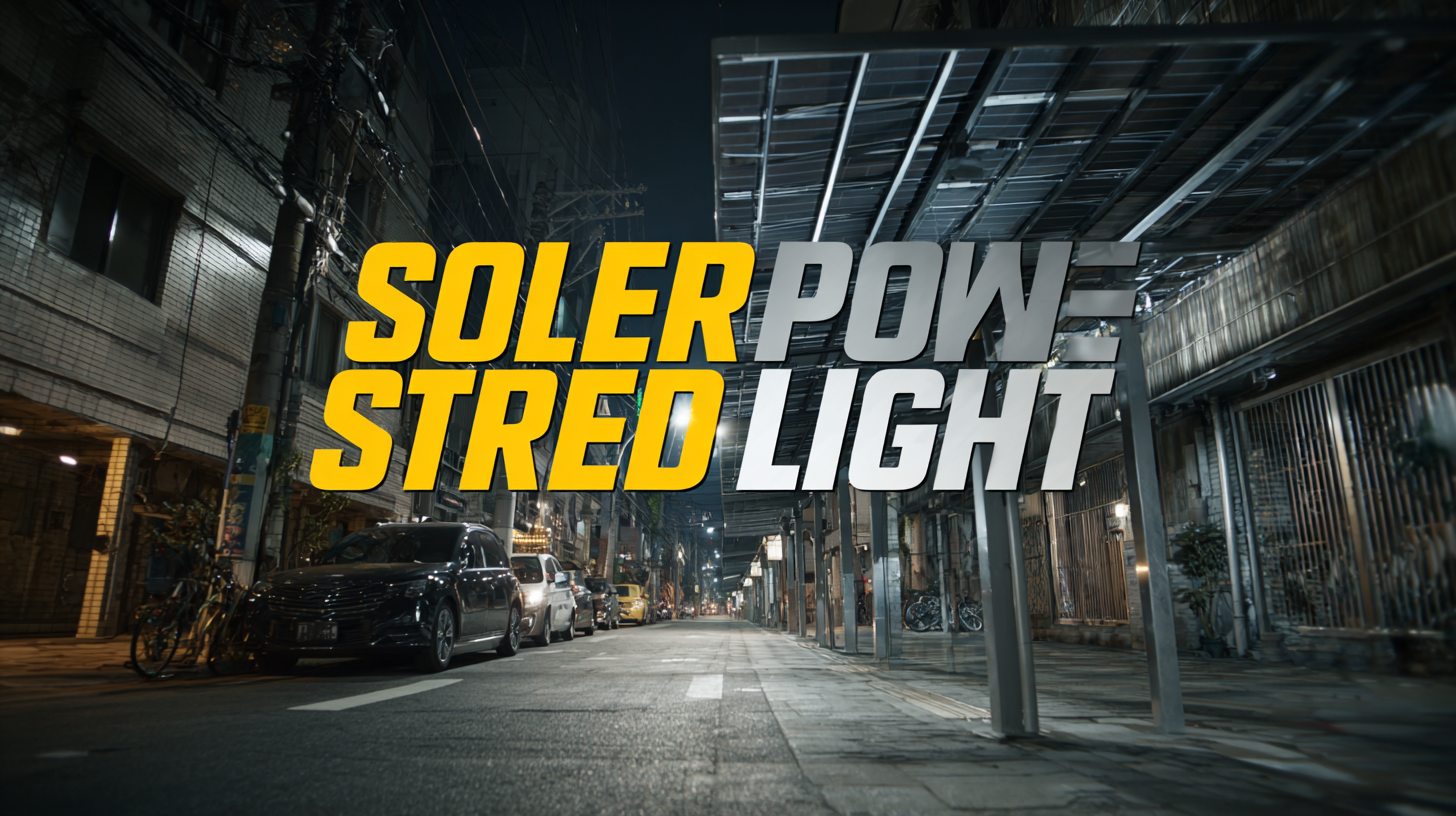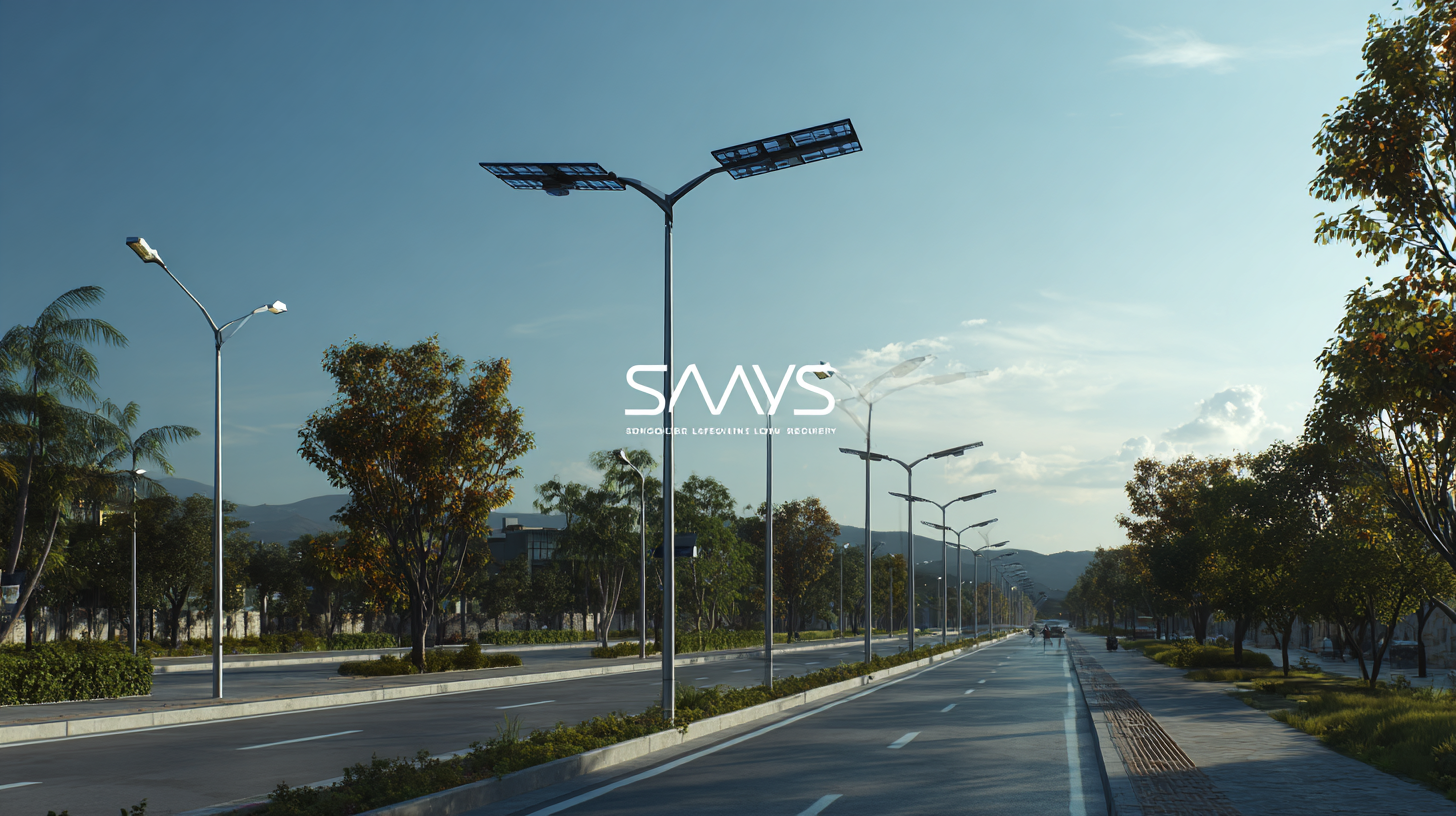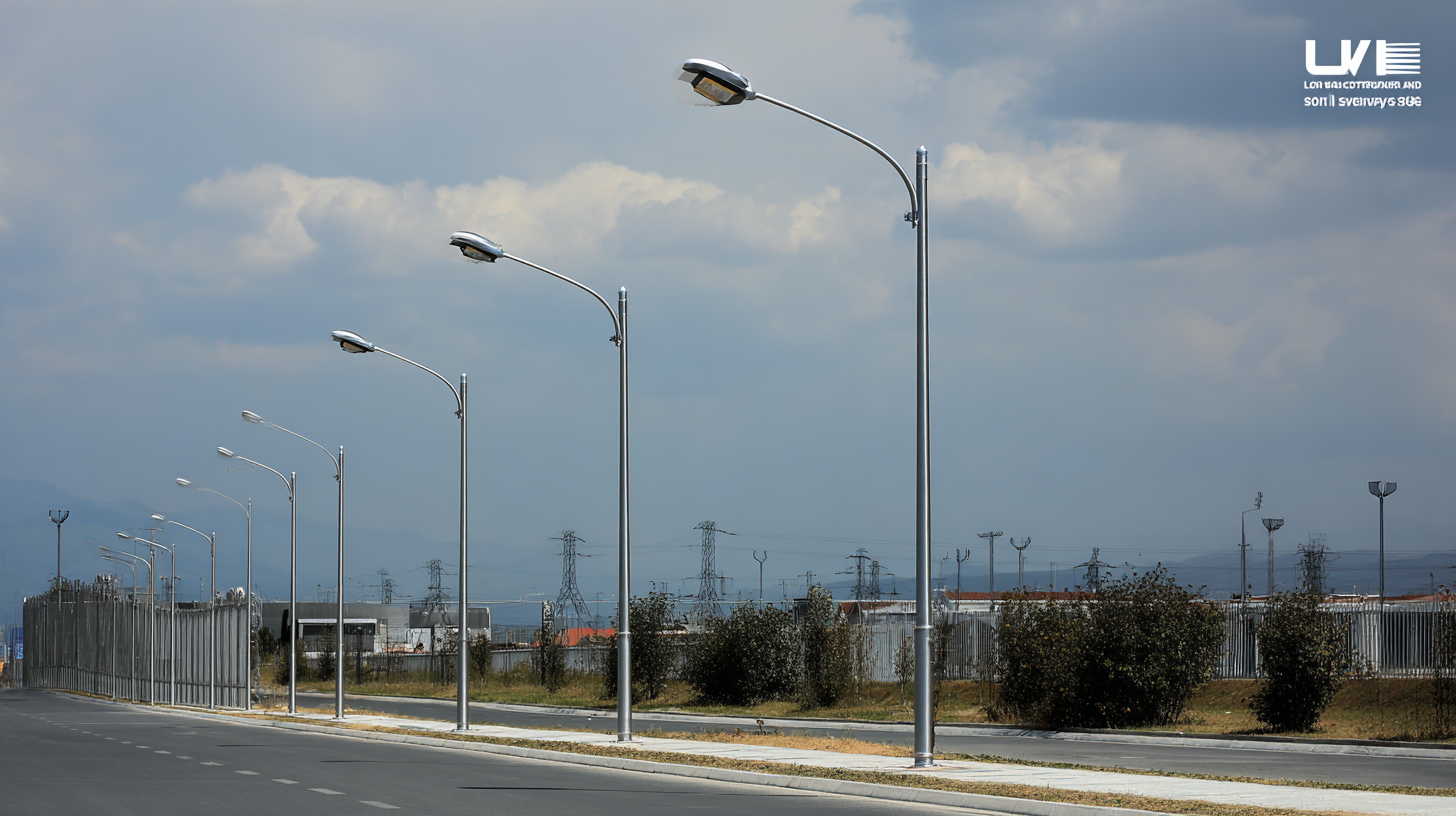News
Innovative Uses of Best Solar Powered Street Lights in Urban Development
In recent years, urban development has increasingly prioritized sustainability and energy efficiency, leading to the innovative adoption of
Solar Powered Street Lights. These advanced lighting solutions not only illuminate our streets but also play a crucial role in enhancing the overall aesthetic and safety of urban environments.
 Equipped with smart technology, Solar Powered Street Lights are designed to adapt to varying lighting needs throughout the night while significantly reducing carbon footprints and energy costs.
As cities worldwide aim to create greener spaces, the integration of Solar Powered Street Lights has emerged as a transformative trend, showcasing how renewable energy sources can revolutionize urban infrastructure.
In this blog, we will explore the myriad benefits and innovative applications of these lights, shedding light on their vital contribution to the future of urban living.
Equipped with smart technology, Solar Powered Street Lights are designed to adapt to varying lighting needs throughout the night while significantly reducing carbon footprints and energy costs.
As cities worldwide aim to create greener spaces, the integration of Solar Powered Street Lights has emerged as a transformative trend, showcasing how renewable energy sources can revolutionize urban infrastructure.
In this blog, we will explore the myriad benefits and innovative applications of these lights, shedding light on their vital contribution to the future of urban living.
Emerging Trends in Solar Powered Street Lighting for Urban Growth by 2025
The rise of solar-powered street lighting is transforming urban landscapes and promoting sustainable development. By 2025, cities are expected to integrate these innovative lighting solutions more prominently, driven by the need to reduce energy consumption and lower carbon footprints. With advancements in solar technology, urban planners are now able to deploy street lights that not only harness solar energy but also provide smart features such as motion sensors and connectivity options for data collection.
Emerging trends in solar-powered street lighting highlight a shift towards multifunctional installations. These lights can support various urban necessities, such as charging stations for electric vehicles and integrated Wi-Fi hotspots, enhancing the urban experience for residents and visitors alike. The incorporation of energy-efficient LED technology with solar systems ensures that cities can maintain well-lit streets while minimizing operational costs. As municipalities embrace these trends, we can anticipate a future where urban areas not only become greener but also more equipped to handle the challenges of modern city living.

Cost-Benefit Analysis: Why Cities Should Invest in Solar Street Lights
As urban areas continue to expand, cities face the dual challenge of improving infrastructure while managing costs and environmental impact. One of the most innovative solutions to this dilemma is the adoption of solar-powered street lights. A cost-benefit analysis reveals that investing in these sustainable lighting systems not only reduces electricity bills but also decreases maintenance costs over time. Unlike traditional street lights, solar models require minimal upkeep as they utilize long-lasting LED technology and are typically self-sustained, freeing up city resources for other critical needs.

Moreover, solar street lights enhance public safety and community well-being. Improved lighting in urban areas leads to a decrease in crime rates, contributing to safer neighborhoods. Additionally, the illumination provided by solar lights fosters nightlife and increases foot traffic, which can benefit local businesses. By deploying solar-powered solutions, cities not only promote a green agenda but also stimulate economic activity. Overall, the transition to solar street lights is a forward-thinking investment that promises both financial savings and social benefits in urban development.
Innovative Installation Techniques for Solar Street Lighting Systems
Solar street lighting systems are rapidly gaining popularity in urban development, thanks to their sustainability and cost-effectiveness. Innovative installation techniques are essential to maximizing the benefits of these systems. One method gaining traction is the use of modular solar panels, which allow for quicker assembly and disassembly. This approach not only reduces the time and labor required for installation but also enables flexibility for future upgrades or relocations as urban landscapes evolve.
Another innovative technique involves the integration of smart technology into solar street lights. By incorporating motion sensors and smart controls, cities can optimize energy usage by adjusting brightness levels based on pedestrian traffic. This adaptive lighting not only enhances public safety but also preserves energy, making it an efficient choice for urban areas. Moreover, strategic placement of lighting fixtures, utilizing existing infrastructure like buildings and utility poles, minimizes the need for extensive groundwork, significantly cutting down installation costs and environmental disruption.
Innovative Uses of Best Solar Powered Street Lights in Urban Development - Innovative Installation Techniques for Solar Street Lighting Systems
| Use Case | Location | Installation Technique | Benefits |
|---|---|---|---|
| Public Parks | City Center | Pole Mounting with Grounding | Improved safety for visitors |
| Residential Areas | Suburban Neighborhoods | Wall Mounting with Integrated Solar Panels | Reduced energy costs and enhanced aesthetics |
| Commercial Districts | Downtown Area | Smart Lighting with Sensor Controls | Energy efficiency and reduced light pollution |
| Pathways and Sidewalks | Urban Walking Trails | Embedded Solar Pavers | Sustainable development and pedestrian safety |
| Parking Lots | Shopping Malls | Solar Canopies | Provides shade and reduces parking lot heat |
Case Studies: Successful Implementations of Solar Street Lights in Major Cities
As urban areas continue to expand, the adoption of solar-powered street lights has emerged as a viable solution for sustainable urban development. Cities like Los Angeles and Singapore have successfully implemented these innovative lighting systems, significantly reducing energy costs and carbon footprints. According to the International Energy Agency, switching to solar street lights can decrease urban electricity consumption by up to 40%. In Los Angeles, the city utilized solar technology to light over 10,000 streetlights, resulting in annual savings of approximately $1.7 million in energy costs.
When planning to integrate solar street lights into urban infrastructure, a few tips can enhance the effectiveness of implementation. First, conduct a thorough analysis of geographical and climatic conditions to ensure optimal solar energy collection throughout the year. Secondly, engage with local communities to assess their needs and gain support for the transition to renewable energy solutions. Lastly, consider adopting smart technology that can be integrated with solar lighting, such as motion sensors and smart city connectivity, which have shown to increase energy efficiency and safety in urban environments.
Case studies reveal impressive outcomes. For instance, in the city of Abu Dhabi, solar street lights contributed to a 30% reduction in energy consumption across public areas. This shift not only promotes clean energy use but also sets a benchmark for other cities aiming for similar sustainability goals. By leveraging successful implementations such as these, urban development can move towards a greener and smarter future.
Future Prospects: How Solar Street Lights Will Shape Urban Development Ecosystems
The integration of solar-powered street lights into urban development initiatives is paving the way for smart, sustainable cities. As cities strive for greener options, solar street lights present an innovative solution, harnessing sunlight to provide illumination without relying on traditional power sources. This shift not only reduces energy expenses but also minimizes carbon footprints. With increasing advancements in solar technology, these lights are becoming more efficient, durable, and aesthetically pleasing, making them ideal for urban landscapes.
Looking forward, the future prospects of solar street lights are indeed promising. They stand to play a crucial role in shaping urban development ecosystems, as municipalities increasingly seek to enhance public safety and accessibility. By incorporating smart features like motion sensors and connectivity to smart city networks, solar-powered street lights can contribute to better urban planning and resource management. As awareness of environmental issues grows, embracing such innovative tools will not only transform urban environments into greener spaces but also foster community engagement and resilience.
